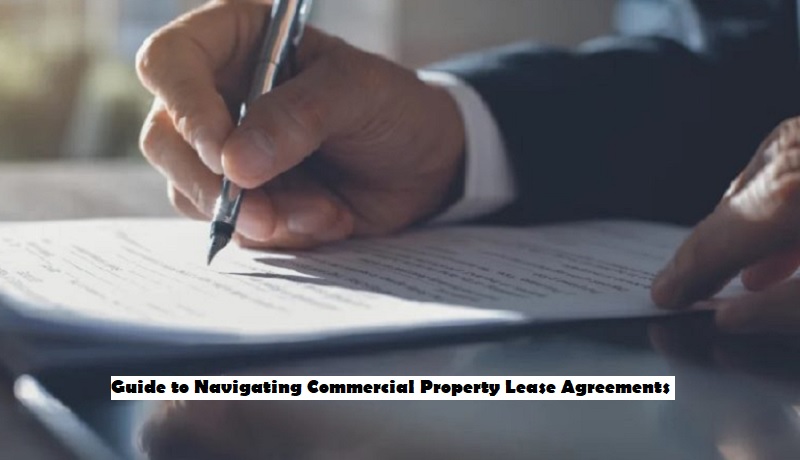The activity of renting and leasing property in the real estate business is certainly inseparable from a written agreement. The goal is that the rental process by the owner to the tenant can run orderly according to the agreement. However, navigating commercial property lease agreements is often a challenge.
Especially among those who do not really understand the world of property. This often causes significant problems in the future. Such as uncertainty, misunderstanding and even the potential for broken promises. Let’s discuss in more detail.

How to Navigate Commercial Property Lease Agreements
As we know, renting commercial property is an important decision for a business, both small and large. A well-drafted lease agreement can protect the interests of both the tenant and the property owner. As well as ensuring smooth operations during the lease period.
However, navigating the complexity of a lease agreement can be challenging without proper understanding. Let’s review the main aspects of a commercial property lease agreement and provide guidance for both parties.
1. Understand the Agreement Structure
The agreement often details the provisions that govern the tenant to rent space from the property owner. Usually involves various points that vary depending on the type of property, location and negotiating strength. The most common types of commercial lease agreements include:
-
Gross Lease
In a gross lease, the property owner covers all or most of the property’s costs. Such as utilities, insurance and taxes. Later, the tenant pays a fixed rent amount while the landlord is responsible for additional costs.
-
Net Lease
Unlike the previous type, a net lease requires the tenant to pay a base fee and some expenses such as taxes, insurance and maintenance. This type of lease is usually specific to retail and industrial properties.
-
Percentage Lease
Then there is a percentage lease that requires the tenant to pay a base rent as well as a percentage of their sales revenue. This is common in properties specifically for medium and large businesses.
2. Observing the Main Components in the Agreement
The next process of navigating commercial property lease agreements is to examine the important components on paper. A complete commercial lease agreement will include several basic provisions. Here are some components to consider:
- Lease term, namely the provisions for how long the tenant will occupy the property. The lease term can range from several months, years to decades.
- The amount of rent and payment terms including the due date and method.
- A guarantee that requires the tenant to provide a security deposit. This is a guarantee for the owner in case of damage to the property or non-payment of rent.
- The lease agreement should specify who is responsible for maintenance and repairs. In some cases, the tenant may maintain the interior of the property. While the landlord is responsible for structural repairs.
- The agreement should detail the permitted uses for the commercial space.
- There is a renewal clause that regulates whether and how the lease can be extended. Then if one party terminates the lease early, whether penalties will apply.
- It is also important to clarify the exit provisions if the tenant wants to end the lease before the end of the term.
3. Negotiating the Lease Agreement
In practice, negotiating the terms of a commercial lease agreement is a crucial part of the leasing process. For example, for tenants, it is best to focus on getting favorable terms. Try to negotiate terms that protect your interests if market conditions change or business needs develop.
While for property owners, they usually focus on ensuring that tenants can meet the terms and pay rent on time. However, property owners must be open to negotiating terms such as rent increases if necessary.
4. Due Diligence
Before signing the agreement, both parties must conduct a thorough inspection. For tenants, this includes legal verification, local market rental rates and assessing the viability of the property. For landlords, checking the tenant’s background and ensuring their ability to pay the rent.
5. Understanding Legal Considerations
In navigating commercial property lease agreements it is also important to be legally aware. This means understanding that the agreement is a legal contract, so that we can be held accountable in court.
Tenants and property owners must ensure that the agreement complies with local laws and regulations. Including those relating to tenant rights, taxes and accessibility. Some considerations include dispute resolution if problems arise and the consequences. If necessary add insurance to it to provide double security.
Overall, navigating commercial property lease agreements must be careful and cautious. A thorough understanding of the terms of the agreement will help to achieve a successful deal. So as to minimize risks and build a solid foundation for the business operations of both parties.
